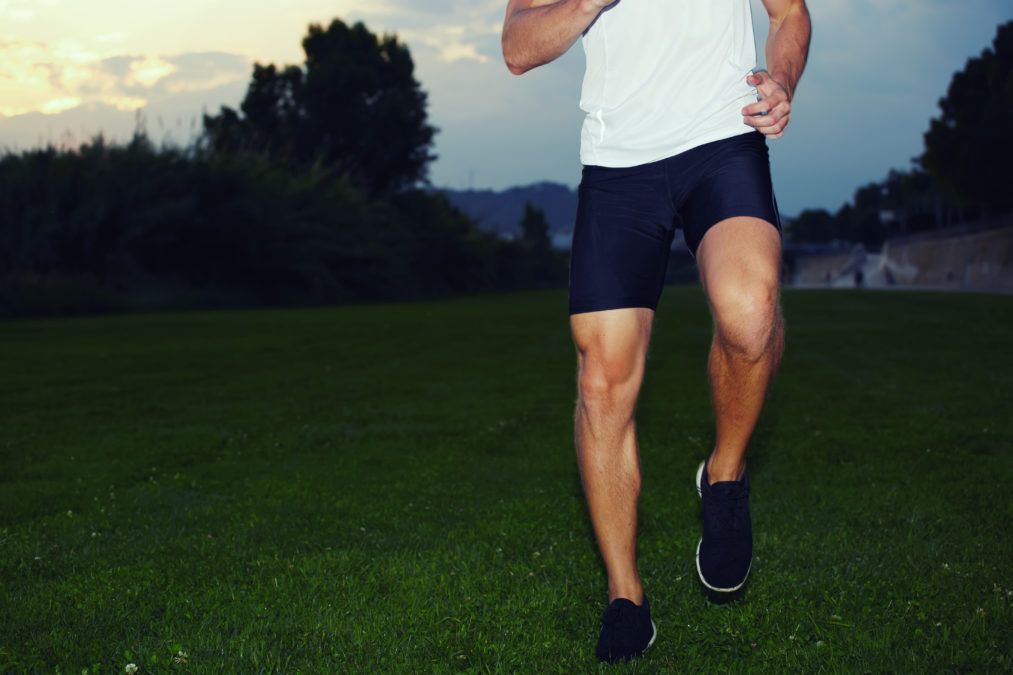
Warming up before doing physical activity and exerting yourself should be second nature. Athletes who don’t warm up risk muscular injury, strain, tearing, and pain. It is important that each individual prepares correctly for the specific activity they are about to undertake. So let’s talk about pre-sports warm-ups in general, and the most appropriate warm-up exercises in particular.
Choose warm-up exercises that are right for you
First of all, it’s important to take into account the time of day you’ll be training, as well as any other environmental factors. If you train in the morning, your body will need a little bit longer to warm up. If you train outdoors, but it’s not spring or summer and so it’s a little colder than usual, again, your body will need a little more warm-up time. The musculoskeletal system, after all, is affected by low temperatures.
The age of the person training also plays a part. The older you are, the longer you should spend warming up for exercise. For most young athletes, ten minutes of warm-ups are enough. For older people, though, the body may need 30 minutes to be properly warmed up for exercise.
Naturally, the type of activity you’re about to do is important. If you are warming up for a few miles’ run, or for an hour or two of strength training, the warm-up should be shorter than if you are taking part in a competition. Also, it’s important to do sport-specific warm-ups for the activity you’re performing: that is, prepare the specific muscle groups that you’ll use. For example, for strength training, that means each exercise should begin with a warm-up with a lighter weight than you actually plan to use in your work sets.
What do sport-specific warm-ups do for you?
No matter what physical activity you’re warming up for, a few things will happen in your body:
- Through the warm-up, the blood flow to your muscles will increase. By warming up before your workout, you’re signaling to your body that it’s about to experience some physical exertion. The body then supplies the working muscles with the blood necessary for the activity, rerouting it mainly from the liver, spleen, and digestive tract.
- As soon as we place our bodies under stress, our hearts also begin to beat faster. As a result, it is not just pumping more blood (which, again, benefits the muscles) through the body, but more oxygen and nutrients, as well. Athletes need these things, as well, for their bodies to function properly.
- Breathing becomes faster. This is important in order to supply enough oxygen and remove enough carbon dioxide.
- When you do a proper warm-up, it also affects the nervous system. When the nervous system is stimulated, muscles and nerves can work better together. The result is more energy efficiency, more stamina before fatigue sets in, and better reaction times.
- Athletes should ideally maintain a body temperature of 38.5° to 39° C (101° to 102° F) during sports. In this temperature range, the body’s physiological reactions are particularly effective. With appropriate warm-up exercises, athletes can achieve this ideal body temperature.
- With targeted warm-up exercises, an athlete’s joints and connective tissues can prepare for the exertion about to come.
- Also, don’t underestimate the real motivation boost for the main activity that warm-up activities gives you.
The difference that warm-up activities make
Various kinds of pre-sports warm-ups may be distinguished from one another. Whereas we talk about either full-body or localized pre-sports warm-ups, others might use the terms “general” and “specific.” General, or full-body, warm-ups refer to exercises that prepare the whole body for the main activity to come. This can be a slow jog, a relaxed bicycle ride, a mountain climber, burpees, a cross-trainer — to warm the whole body up, a five-to-ten-minute session of one of these exercises is sufficient.
Local, or specific, warm-ups target only the body region or muscle group that will be used during the main exercise. Shoulder circles, for example, when the training session will involve the shoulders, or warm-up sets with lighter weights before a strength workout.
You may also hear about “active” and “passive” sports warm-ups. Whereas the warm-up activities above are considered active warm-ups, things like hot showers, massages, and infrared lamps are considered passive warm-ups. These are meant to affect body temperature, muscles, and blood flow. In any event, you shouldn’t rely on passive warm-ups exclusively. They are best used as supporting warm-up activities. Otherwise, athletes are at risk of injury.
What to consider when warming up before exercise
To finish, we’d like to leave you with a few rules that are important to keep in mind when you’re warming up before doing your workout.
- Start slowly: Whichever warm-up exercises you choose, it is important above all to start slowly. At the beginning, you should progressively increase the speed or intensity of the exercise.
- Large muscles first: When you’re warming up a single muscle group, the large muscles should come first. This brings the body temperature up faster than if you warm up the smaller muscle groups first.
- No break between warm-ups and the main training session: So as not to lose the increased blood flow that your muscles get from warm-ups, there should be no more than five minutes between your warm-up and training. Otherwise, the positive effect can be lost before training begins.
- Is stretching useful? Generally, it can be useful before exercising to stretch the parts of the body that you will use. There are many different stretching exercises to choose from for warm-up.
Warming up before exercise is important – it is how you avoid injury. Depending on the type of exercise, a variety of warm-up activities can be used. With the right warm-up, your training will be more successful. Just try it out!